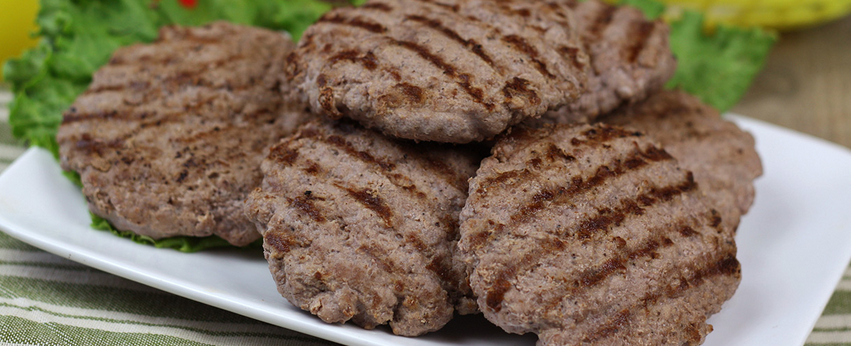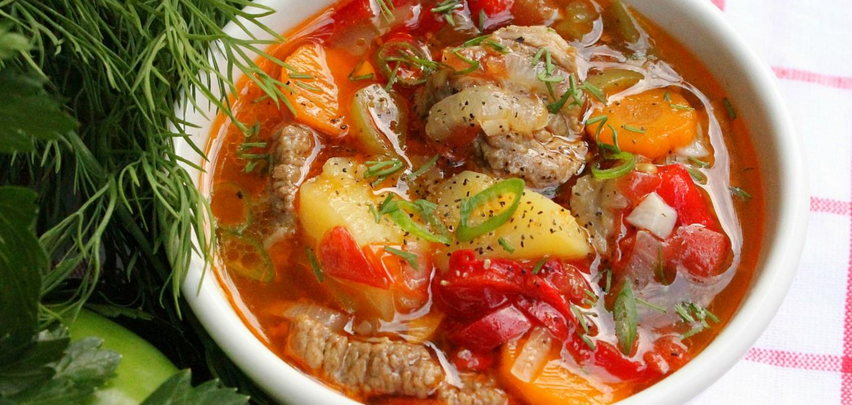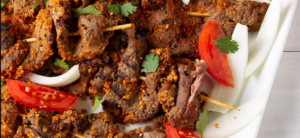Slow Cooker Beef Short Ribs Recipe
Slow Cooker Beef Short Ribs Recipe: Fall-Off-the-Bone Tender with Sauce Ideas

Beef short ribs are a dream cut for slow cooking. They’re rich in connective tissue, well-marbled with fat, and packed with deep beefy flavor that only gets better the longer it cooks. As a chef, I’ve cooked short ribs every way imaginable, but the slow cooker remains my favorite for hands-off, foolproof tenderness. The key lies in gentle, moist heat over hours—perfectly suited for transforming this tough cut into something you can shred with a fork. Plus, the enclosed environment of a slow cooker allows flavors to develop slowly and evenly, resulting in meat so flavorful and tender it slides right off the bone.
- Ingredients and Equipment You’ll Need
- Trimming, Seasoning, and Prepping the Ribs
- How to Layer Flavors for Deep Braising
- Slow Cooker Method: Time and Temperature Guide
- How to Finish the Sauce: Reduction and Gloss
- Oven-Braising as an Alternative
- Skillet and Stove-Top Method
- Pressure Cooker Method for Speed
- Microwave Use: Strictly for Reheating
- Sauce Ideas for Serving
- Seasonings and Aromatics That Enhance the Dish
- Common Mistakes and How to Avoid Them
- Serving Suggestions and Pairings
- Storage and Reheating Instructions
- Recipe Variations Worth Trying
- Why This Recipe Always Delivers
- FAQ: 15 Questions About Cooking Beef Short Ribs in a Slow Cooker

Ingredients and Equipment You’ll Need
Here’s what I typically use to make this dish both satisfying and balanced in flavor:
Ingredients:
- 3 to 4 pounds bone-in beef short ribs
- Salt and freshly ground black pepper
- 1 tablespoon olive oil
- 1 large onion, sliced
- 4 cloves garlic, minced
- 2 tablespoons tomato paste
- 1½ cups beef broth
- 1 cup dry red wine (or more broth)
- 2 tablespoons Worcestershire sauce
- 2 sprigs fresh thyme
- 2 sprigs fresh rosemary
- Optional: carrots, celery, mushrooms, bay leaf
Equipment:
- 6-quart slow cooker
- Cast iron skillet or sauté pan (for browning)
- Tongs, ladle, and slotted spoon
- Cutting board and carving knife
- Foil and meat thermometer (optional)
Trimming, Seasoning, and Prepping the Ribs
Before anything else, I inspect the short ribs for excess surface fat or sinew. Some fat is important for moisture and flavor, but too much can leave the dish greasy. I pat the ribs dry with paper towels and season them generously with kosher salt and cracked black pepper. Dry meat sears better, and seasoning early ensures the flavor penetrates.
I always sear the ribs in a hot skillet with a little oil before placing them into the slow cooker. This browning step takes about 2–3 minutes per side and is essential—it develops flavor through the Maillard reaction, giving the final dish a rich, savory backbone. Don’t skip it.
How to Layer Flavors for Deep Braising
Flavor layering is what separates good short ribs from unforgettable ones. After searing, I sauté onions and garlic in the same pan, scraping up the browned bits from the bottom. I add tomato paste and cook it for a minute to deepen its flavor. Then, I deglaze the pan with red wine, letting it simmer to reduce slightly.
I pour this mixture over the seared ribs in the slow cooker, then add beef broth, Worcestershire sauce, herbs, and any optional vegetables. I nestle the ribs into the liquid—not fully submerged, but mostly covered. This layering creates a braising environment where the ribs cook gently and soak in all those complex flavors over hours.

Slow Cooker Method: Time and Temperature Guide
I always cook short ribs on low for 8 to 9 hours. High heat speeds things up, but in my experience, the texture doesn’t compare. After 8 hours on low, the meat should be pull-apart tender, the bones loose, and the liquid rich and reduced.
Once finished, I let the ribs rest in the cooker for 20–30 minutes with the lid slightly ajar. This helps the juices redistribute and the fat separate naturally on top, which I can skim off before serving or using as a base for sauce.
Internal Temperature and Doneness Chart
| Temperature | Result | Time Estimate (LOW) |
| 160°F (71°C) | Firm, slicing texture | 5–6 hours |
| 185°F (85°C) | Tender, pulling texture | 7–8 hours |
| 195–205°F | Fall-off-the-bone tender | 8–9 hours |
I always check doneness with a fork or tongs. If the meat resists even a gentle pull, it’s not ready yet.
How to Finish the Sauce: Reduction and Gloss
After the ribs are cooked, I remove them carefully and strain the cooking liquid through a fine-mesh sieve. I then pour it into a saucepan and bring it to a gentle simmer. Letting it reduce by half intensifies the flavor and concentrates the richness.
To create a glossy, silky sauce, I whisk in a tablespoon of cold butter right at the end. If I want a thicker consistency, I stir in a cornstarch slurry (one tablespoon cornstarch mixed with one tablespoon cold water) and simmer until the sauce lightly coats a spoon.
This finishing step is what turns a rustic dish into something worthy of fine dining.
Oven-Braising as an Alternative
If you don’t have a slow cooker, the oven does a fine job. I sear the ribs, build the sauce, and place everything in a Dutch oven with a tight-fitting lid. Then I bake at 300°F (150°C) for 3 to 3.5 hours until tender. The oven’s dry heat evaporates liquid faster, so I check the pot occasionally and add more broth if needed.
Oven-braised short ribs develop more surface caramelization and slightly deeper flavors. They’re great when I want a more intense dish.

Skillet and Stove-Top Method
Stovetop braising works, though it needs more babysitting. I sear the ribs and simmer them in a large heavy pot, partially covered, on very low heat for 3–4 hours. I stir occasionally and rotate the ribs to ensure even cooking. This method is a little more hands-on but very effective.
The biggest risk is uneven heat. I always keep the burner on the lowest setting and use a diffuser if needed.
Pressure Cooker Method for Speed
When I need short ribs fast, I use my pressure cooker. After searing the meat and building the sauce in the pot, I lock the lid and cook on high pressure for 45 minutes, followed by a 15-minute natural release.
The texture is excellent, and the meat is nearly fall-off-the-bone, though I usually reduce the sauce afterward for more depth. This method is ideal for weeknights when time is short but craving is strong.
Microwave Use: Strictly for Reheating
I don’t recommend cooking short ribs in a microwave—it simply doesn’t generate the consistent, moist heat required for collagen breakdown. However, for reheating leftovers, it can work.
I slice or shred the meat, add a spoonful of sauce or broth, cover with a damp paper towel, and heat on 50% power in short intervals, stirring occasionally. This method prevents the meat from drying out or overheating unevenly.
Sauce Ideas for Serving
The sauce defines the final dish. One of my all-time favorites is a classic red wine reduction made from the cooking liquid. It’s bold, rich, and velvety. For something brighter, I prepare a balsamic glaze with shallots and thyme. If I want a smoky note, I stir in a bit of chipotle puree or smoked paprika.
Other options I’ve used include horseradish cream sauce for contrast, soy-ginger glaze for an Asian twist, or even a mustard-maple blend for a sweet-savory balance. The key is pairing the sauce with the occasion and side dishes.

Seasonings and Aromatics That Enhance the Dish
When it comes to seasoning beef short ribs for the slow cooker, I keep things bold but balanced. I always use a generous amount of kosher salt and coarse black pepper as a base—this ensures the meat is properly seasoned throughout the long cook. Then I build layers using aromatics like garlic, onion, and tomato paste, which deepen during the braise.
Fresh thyme and rosemary are staples for me—they infuse the sauce gently without overpowering it. Bay leaf adds a subtle earthiness. For extra body, I sometimes include a touch of soy sauce or anchovy paste, especially if I’m going for umami depth. These additions melt into the background but lift the entire dish.
I avoid adding delicate herbs like basil or parsley during cooking, as their flavor gets lost. Instead, I reserve them for garnishing the finished dish to add brightness and color.
Common Mistakes and How to Avoid Them
Even with a forgiving cut like short ribs, I’ve seen common pitfalls that can sabotage the final result. One mistake is skipping the searing step. Yes, it adds time, but it also adds irreplaceable flavor. I’ve tested side-by-side batches with and without searing—the difference is night and day.
Another mistake is undercooking. Short ribs need time. If you try to pull them after just 5 or 6 hours, they might seem done, but they won’t be melt-in-your-mouth tender. Patience always pays off.
Finally, using too much liquid dilutes the sauce. The ribs release moisture during cooking, so I only add enough braising liquid to come halfway up the meat. This way, I end up with a rich, concentrated sauce instead of something thin and watery.

Serving Suggestions and Pairings
Short ribs are incredibly versatile on the plate. I’ve served them over mashed potatoes, creamy polenta, and even cauliflower purée. These soft bases catch all the rich sauce and provide a comforting foundation. When I want to add a rustic element, I use buttered egg noodles or herbed rice.
As for vegetables, I prefer something roasted—carrots, Brussels sprouts, or parsnips are great choices. Their caramelized edges and slight sweetness balance the deep, beefy flavors. For contrast, I often include something with acidity: pickled onions, sautéed greens with lemon, or even a spoonful of whole-grain mustard on the side.
Wine pairings are easy—full-bodied reds like Cabernet Sauvignon or Syrah are excellent. For beer lovers, a dark ale or porter complements the richness beautifully.
Storage and Reheating Instructions
Once cooked, short ribs store exceptionally well. I cool them to room temperature, then transfer the meat and sauce into airtight containers. In the refrigerator, they’ll keep for up to 4 days. For freezing, I recommend separating the meat from the sauce and wrapping each tightly before storing in sealed freezer bags or containers for up to 3 months.
When reheating, I prefer the oven. I place the ribs in a baking dish, cover with foil, and warm at 300°F (150°C) for 20–25 minutes. I spoon a bit of sauce over the top before baking to keep the meat moist. On the stovetop, I gently simmer the meat and sauce together over low heat.
Microwaving is fine for small portions. I slice the meat and cover it loosely in a dish with sauce. I heat on 50% power and stir halfway through for even reheating.
Recipe Variations Worth Trying
Over the years, I’ve experimented with dozens of short rib variations. For an Italian twist, I braise with crushed tomatoes, rosemary, and red wine, finishing with fresh basil and Parmigiano. For a Korean-style dish, I use soy sauce, sesame oil, garlic, ginger, and brown sugar, then garnish with scallions and sesame seeds.
A French-style version uses shallots, Dijon mustard, and thyme with a red wine base. Sometimes I go Latin with chipotle peppers, orange juice, and cumin—great for tacos or rice bowls.
Once you understand the core technique—brown, layer, braise—you can infuse the dish with nearly any global flavor profile. That’s the beauty of short ribs: they adapt.
Why This Recipe Always Delivers
I’ve returned to this recipe more times than I can count because it’s consistent, deeply satisfying, and adaptable. The slow cooker simplifies the process while producing results on par with restaurant-quality braising. The flavors are rich but customizable, the texture tender every time, and the process approachable for any home cook.
Whether I’m preparing a quiet dinner or feeding a crowd, these short ribs never fail. With just a little prep in the morning, I’m rewarded with fall-apart meat, bold sauce, and smiling faces around the table.
FAQ: 15 Questions About Cooking Beef Short Ribs in a Slow Cooker
Do I have to sear the short ribs before slow cooking?
I’ve tested both ways, and I can say confidently: searing makes a huge difference. It builds a flavor foundation through caramelization that no amount of slow simmering can replicate. When I’m short on time, I might skip it—but I never do for special meals or guests.
Can I cook short ribs on high instead of low?
Yes, but I don’t recommend it. I’ve tried both, and ribs cooked on low for 8–9 hours are more tender and flavorful. High heat speeds up the process, but the texture can be uneven. If you’re after truly fall-off-the-bone meat, low and slow is the way.
Should the ribs be fully submerged in liquid?
No. From experience, I’ve learned that short ribs release plenty of moisture during cooking. I add enough liquid to come about halfway up the meat. This prevents stewing and ensures a richer, more concentrated sauce at the end.
What’s the best wine to use in the braising liquid?
I typically use a dry red like Cabernet Sauvignon or Merlot. It adds depth and color without overwhelming the beef. I’ve also used Zinfandel and Shiraz for spicier notes. If you’re not a wine drinker, use extra beef broth and a splash of balsamic vinegar for complexity.
Can I use boneless short ribs?
You can, and I’ve done so many times for catering. They cook faster and are easier to portion. But bone-in ribs tend to be juicier and more flavorful, and they create a richer sauce due to the marrow. I use boneless only when absolutely necessary.
How do I make sure the sauce isn’t too greasy?
After cooking, I let the ribs rest and cool slightly in the cooker. The fat naturally rises to the top and solidifies as it cools. I skim it off with a spoon or chill the sauce and remove it once it firms. It’s a small step that makes a big difference in the final dish.
Can I add vegetables to cook with the ribs?
Absolutely. I often include carrots, onions, and celery. They not only add flavor to the braising liquid but also make great sides if you don’t overcook them. I usually cut them large so they don’t turn mushy after 8 hours.
How do I know when short ribs are fully cooked?
The meat should pull apart easily with a fork or fall off the bone when lifted. Internal temperature will often be around 195–205°F. But in truth, I go by texture more than temperature—if it resists, it needs more time.
Can I use water instead of broth?
Technically yes, but I don’t recommend it. Water lacks body and seasoning. If you’re out of broth, add water and enhance it with tomato paste, soy sauce, or bouillon. I’ve done this in a pinch, and it saved the dish.
How do I store leftovers properly?
I cool the ribs completely, separate the meat and sauce into airtight containers, and store them in the fridge for up to four days. I’ve frozen them for up to three months successfully. When reheating, I always include a splash of sauce to keep things moist.
Is it possible to overcook short ribs?
Yes—but only if you let them go past the point where they lose structure completely. I’ve had batches that turned to mush because they went 10+ hours on high. With proper monitoring, they become tender but still sliceable or shreddable.
Can I make this dish ahead of time?
Definitely—and I actually prefer it that way. I often cook the ribs a day in advance, chill them in the sauce, skim the fat, and reheat them gently before serving. The flavor deepens overnight, and the texture remains perfect.
What are some unusual but tasty flavor twists?
I’ve tried using hoisin sauce and five-spice powder for an Asian version, or espresso and ancho chili for a smoky Southwest take. Maple syrup and Dijon mustard work wonderfully too. Short ribs are a canvas for bold flavors.
Do short ribs need to rest after cooking?
Yes. I let them sit in the pot, off heat, for at least 20 minutes. This helps them retain moisture and makes skimming the fat easier. When I skip this step, the sauce tends to look oily, and the meat dries out faster on the plate.
What’s your go-to side dish for short ribs?
It depends on the occasion, but creamy polenta or mashed potatoes are my standards. They hold the sauce beautifully. I also love pairing them with roasted root vegetables or a tangy slaw for texture contrast. When in doubt, I serve it with crusty bread to soak up every last drop.




Post Comment